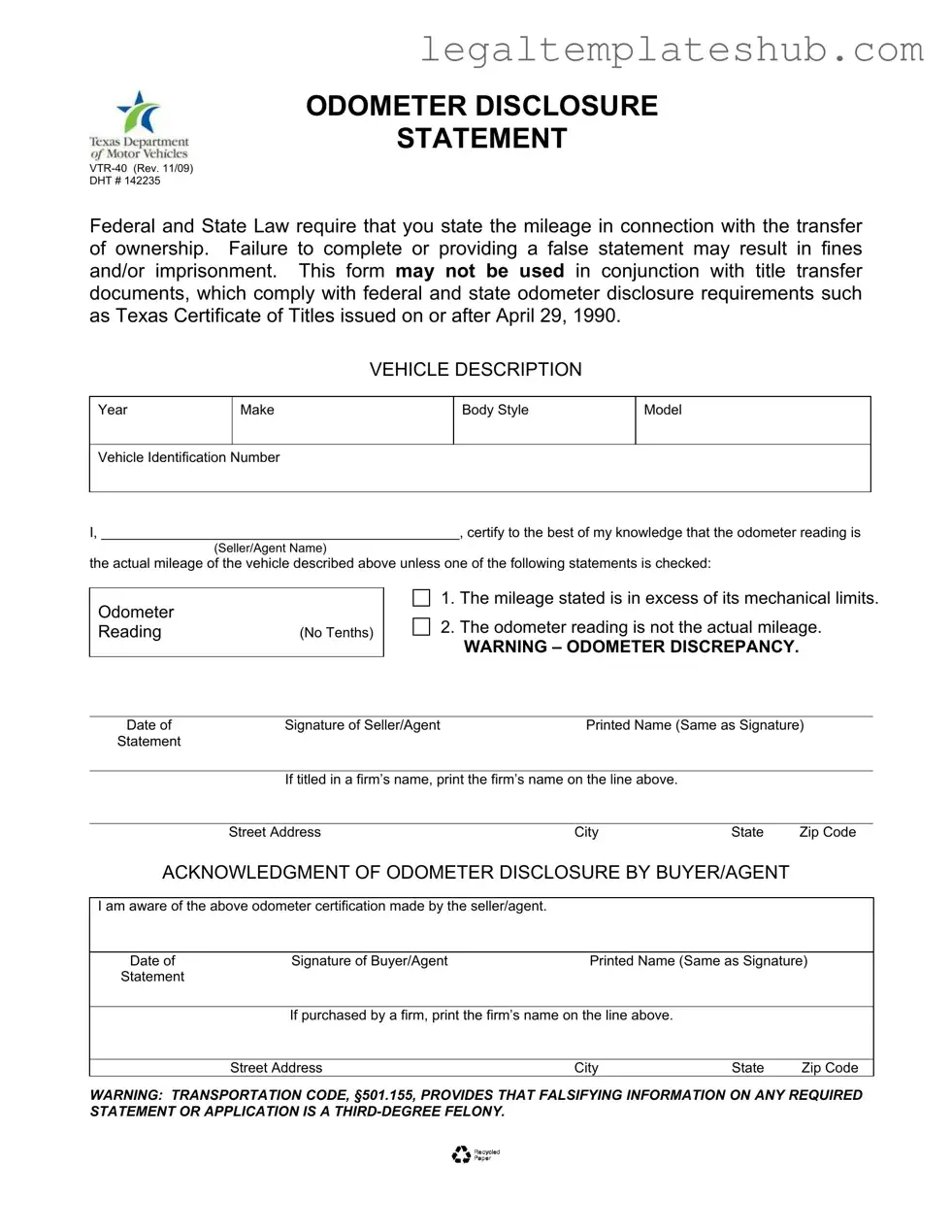Blank Texas Odometer Statement PDF Form
The Texas Odometer Statement form, officially known as VTR-40, is a crucial document that ensures the accurate reporting of a vehicle's mileage during ownership transfers. This form protects both buyers and sellers by requiring a declaration of the odometer reading, which must be truthful to comply with federal and state laws. Failing to provide accurate information can lead to serious consequences, including fines or even imprisonment.
Ready to fill out the Texas Odometer Statement? Click the button below to get started!
Access Editor
